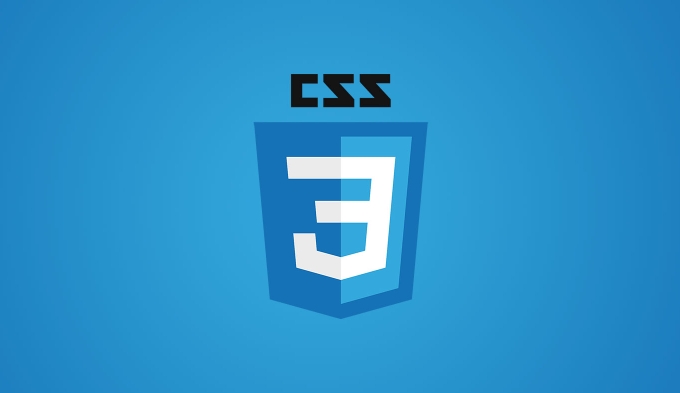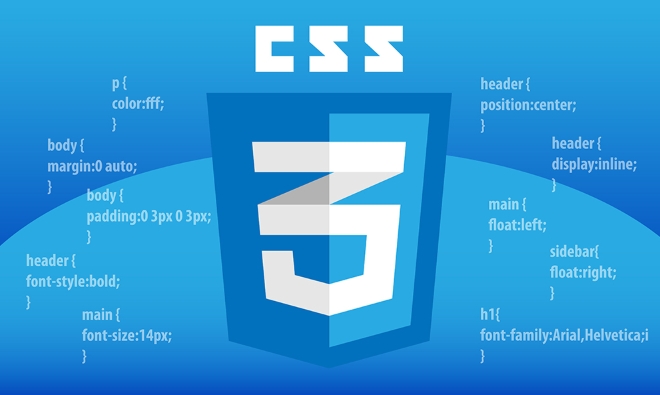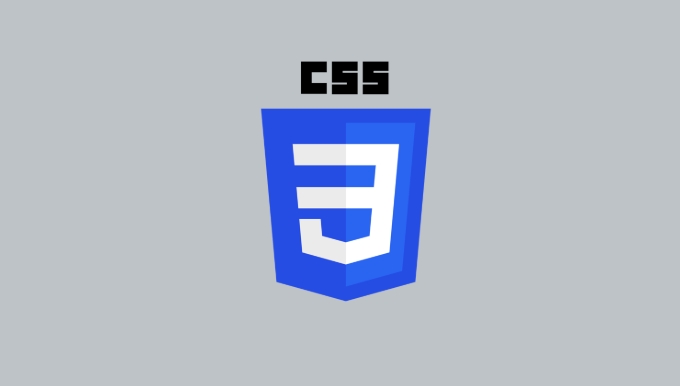CSS The method to set up a custom cursor is simple and practical. 1. Use the cursor attribute to support built-in styles (such as pointer, text) or image paths (such as .cur or .png); 2. It is recommended to use the .cur format and control the image size to within 32x32 or 48x48 pixels to optimize performance; 3. You can specify the hot spot position through coordinate points and set alternative cursors to ensure compatibility; 4. Note that Safari has limited support for .curr, cursor images cannot be loaded across domains, and some devices may ignore custom cursors. Rational use can enhance the visual style, but it should not be relied on to convey key functions.

Using cursor attribute of CSS to set a custom cursor is actually simpler than many people think. As long as you master the basic syntax and some precautions, you can easily add a personalized mouse pointer effect to the web page.

Two ways to customize the cursor
The cursor setting in CSS mainly relies on cursor attribute, and supports two common forms: using the system's built-in cursor style, or specifying an image as a custom cursor.

- The system default cursor : for example
pointer,text,wait, etc. Just write the keywords directly. - Custom image cursor : You need to provide an image path (usually in
.curor.pngformat), and you can also add a coordinate point to specify the click position.
For example:
cursor: url('custom-cursor.png'), auto;
auto here is an alternative value. If the browser fails to load or does not support it, it will use the default cursor.

Select the appropriate cursor format and size
Not all images can be used as cursors smoothly. For compatibility and performance considerations, these principles are recommended:
- The best format is used for the
.curformat, because it is designed for cursors and supports hotspot information. - If using
.png, try to keep the size within 32x32 or 48x48 pixels. Too large will affect the response speed. - The hotspot location can be specified with the second parameter, such as:
cursor: url('cursor.cur'), url('fallback.png') 10 10, pointer;
In the example above, if .cur is not available, .png will be attempted to load and the hotspot offset is set to (10,10), and the final pointer is the final alternative system cursor.
Browser compatibility and precautions
Although mainstream modern browsers support custom cursors, some details still need to be paid attention to:
- Safari has limited support for
.curfiles, so it is best to prepare.pngalternatives. - The cursor image cannot be loaded across domains, otherwise it will be ignored.
- Some operating systems or devices may ignore custom cursors completely (such as some touch devices).
Therefore, do not rely on the cursor style to convey key functions when used, it is more of a visual enhancement than an interactive requirement.
Basically that's it. Setting a custom cursor is not complicated, but it is easy to ignore format, alternatives, and compatibility issues. Just pay attention to these details, the website will look more stylish and practical.
The above is the detailed content of Styling custom cursors with CSS cursor property. For more information, please follow other related articles on the PHP Chinese website!

Hot AI Tools

Undress AI Tool
Undress images for free

Undresser.AI Undress
AI-powered app for creating realistic nude photos

AI Clothes Remover
Online AI tool for removing clothes from photos.

Clothoff.io
AI clothes remover

Video Face Swap
Swap faces in any video effortlessly with our completely free AI face swap tool!

Hot Article

Hot Tools

Notepad++7.3.1
Easy-to-use and free code editor

SublimeText3 Chinese version
Chinese version, very easy to use

Zend Studio 13.0.1
Powerful PHP integrated development environment

Dreamweaver CS6
Visual web development tools

SublimeText3 Mac version
God-level code editing software (SublimeText3)

Hot Topics
 What is 'render-blocking CSS'?
Jun 24, 2025 am 12:42 AM
What is 'render-blocking CSS'?
Jun 24, 2025 am 12:42 AM
CSS blocks page rendering because browsers view inline and external CSS as key resources by default, especially with imported stylesheets, header large amounts of inline CSS, and unoptimized media query styles. 1. Extract critical CSS and embed it into HTML; 2. Delay loading non-critical CSS through JavaScript; 3. Use media attributes to optimize loading such as print styles; 4. Compress and merge CSS to reduce requests. It is recommended to use tools to extract key CSS, combine rel="preload" asynchronous loading, and use media delayed loading reasonably to avoid excessive splitting and complex script control.
 External vs. Internal CSS: What's the Best Approach?
Jun 20, 2025 am 12:45 AM
External vs. Internal CSS: What's the Best Approach?
Jun 20, 2025 am 12:45 AM
ThebestapproachforCSSdependsontheproject'sspecificneeds.Forlargerprojects,externalCSSisbetterduetomaintainabilityandreusability;forsmallerprojectsorsingle-pageapplications,internalCSSmightbemoresuitable.It'scrucialtobalanceprojectsize,performanceneed
 Does my CSS must be on lower case?
Jun 19, 2025 am 12:29 AM
Does my CSS must be on lower case?
Jun 19, 2025 am 12:29 AM
No,CSSdoesnothavetobeinlowercase.However,usinglowercaseisrecommendedfor:1)Consistencyandreadability,2)Avoidingerrorsinrelatedtechnologies,3)Potentialperformancebenefits,and4)Improvedcollaborationwithinteams.
 CSS Case Sensitivity: Understanding What Matters
Jun 20, 2025 am 12:09 AM
CSS Case Sensitivity: Understanding What Matters
Jun 20, 2025 am 12:09 AM
CSSismostlycase-insensitive,butURLsandfontfamilynamesarecase-sensitive.1)Propertiesandvalueslikecolor:red;arenotcase-sensitive.2)URLsmustmatchtheserver'scase,e.g.,/images/Logo.png.3)Fontfamilynameslike'OpenSans'mustbeexact.
 What is Autoprefixer and how does it work?
Jul 02, 2025 am 01:15 AM
What is Autoprefixer and how does it work?
Jul 02, 2025 am 01:15 AM
Autoprefixer is a tool that automatically adds vendor prefixes to CSS attributes based on the target browser scope. 1. It solves the problem of manually maintaining prefixes with errors; 2. Work through the PostCSS plug-in form, parse CSS, analyze attributes that need to be prefixed, and generate code according to configuration; 3. The usage steps include installing plug-ins, setting browserslist, and enabling them in the build process; 4. Notes include not manually adding prefixes, keeping configuration updates, prefixes not all attributes, and it is recommended to use them with the preprocessor.
 What are CSS counters?
Jun 19, 2025 am 12:34 AM
What are CSS counters?
Jun 19, 2025 am 12:34 AM
CSScounterscanautomaticallynumbersectionsandlists.1)Usecounter-resettoinitialize,counter-incrementtoincrease,andcounter()orcounters()todisplayvalues.2)CombinewithJavaScriptfordynamiccontenttoensureaccurateupdates.
 CSS: When Does Case Matter (and When Doesn't)?
Jun 19, 2025 am 12:27 AM
CSS: When Does Case Matter (and When Doesn't)?
Jun 19, 2025 am 12:27 AM
In CSS, selector and attribute names are case-sensitive, while values, named colors, URLs, and custom attributes are case-sensitive. 1. The selector and attribute names are case-insensitive, such as background-color and background-Color are the same. 2. The hexadecimal color in the value is case-sensitive, but the named color is case-sensitive, such as red and Red is invalid. 3. URLs are case sensitive and may cause file loading problems. 4. Custom properties (variables) are case sensitive, and you need to pay attention to the consistency of case when using them.
 What is the conic-gradient() function?
Jul 01, 2025 am 01:16 AM
What is the conic-gradient() function?
Jul 01, 2025 am 01:16 AM
Theconic-gradient()functioninCSScreatescirculargradientsthatrotatecolorstopsaroundacentralpoint.1.Itisidealforpiecharts,progressindicators,colorwheels,anddecorativebackgrounds.2.Itworksbydefiningcolorstopsatspecificangles,optionallystartingfromadefin






